- Home
- Michael Crichton
Jurassic Park Page 4
Jurassic Park Read online
Page 4
Before lunchtime, the lab had its answer: the lizard blood showed no significant reactivity to any viral or bacterial antigen. They had run toxicity profiles as well, and they had found only one positive match: the blood was mildly reactive to the venom of the Indian king cobra. But such cross-reactivity was common among reptile species, and Dr. Stone did not think it noteworthy to include in the fax his technician sent to Dr. Martin Guitierrez that same evening.
There was never any question about identifying the lizard; that would await the return of Dr. Simpson. He was not due back for several weeks, and his secretary asked if the TDL would please store the lizard fragment in the meantime. Dr. Stone put it back in the zip-lock bag and stuck it in the freezer.
Martin Guitierrez read the fax from the Columbia Medical Center/ Tropical Diseases Laboratory. It was brief:
SUBJECT: Basiliscus amoratus with genetic anomaly (forwarded from Dr. Simpson’s office)
MATERIALS: posterior segment, ? partially eaten animal
PROCEDURES PERFORMED: X ray, microscopic, immunological RTX for viral, parasitic, bacterial disease.
FINDINGS: No histologic or immunologic evidence for any communicable disease in man in this Basiliscus amoratus sample.
(signed)
Richard A. Stone, M.D., director
Guitierrez made two assumptions based on the memo. First, that his identification of the lizard as a basilisk had been confirmed by scientists at Columbia University. And second, that the absence of communicable disease meant the recent episodes of sporadic lizard bites implied no serious health hazards for Costa Rica. On the contrary, he felt his original views were correct: that a lizard species had been driven from the forest into a new habitat, and was coming into contact with village people. Guitierrez was certain that in a few more weeks the lizards would settle down and the biting episodes would end.
The tropical rain fell in great drenching sheets, hammering the corrugated roof of the clinic in Bahía Anasco. It was nearly midnight; power had been lost in the storm, and the midwife Elena Morales was working by flashlight when she heard a squeaking, chirping sound. Thinking that it was a rat, she quickly put a compress on the forehead of the mother and went into the next room to check on the newborn baby. As her hand touched the doorknob, she heard the chirping again, and she relaxed. Evidently it was just a bird, flying in the window to get out of the rain. Costa Ricans said that when a bird came to visit a newborn child, it brought good luck.
Elena opened the door. The infant lay in a wicker bassinet, swaddled in a light blanket, only its face exposed. Around the rim of the bassinet, three dark green lizards crouched like gargoyles. When they saw Elena, they cocked their heads and stared curiously at her, but did not flee. In the light of her flashlight Elena saw the blood dripping from their snouts. Softly chirping, one lizard bent down and, with a quick shake of its head, tore a ragged chunk of flesh from the baby.
Elena rushed forward, screaming, and the lizards fled into the darkness. But long before she reached the bassinet, she could see what had happened to the infant’s face, and she knew the child must be dead. The lizards scattered into the rainy night, chirping and squealing, leaving behind only bloody three-toed tracks, like birds.
THE SHAPE OF THE DATA
Later, when she was calmer, Elena Morales decided not to report the lizard attack. Despite the horror she had seen, she began to worry that she might be criticized for leaving the baby unguarded. So she told the mother that the baby had asphyxiated, and she reported the death on the forms she sent to San José as SIDS: sudden infant death syndrome. This was a syndrome of unexplained death among very young children; it was unremarkable, and her report went unchallenged.
The university lab in San José that analyzed the saliva sample from Tina Bowman’s arm made several remarkable discoveries. There was, as expected, a great deal of serotonin. But among the salivary proteins was a real monster: molecular mass of 1,980,000, one of the largest proteins known. Biological activity was still under study, but it seemed to be a neurotoxic poison related to cobra venom, although more primitive in structure.
The lab also detected trace quantities of the gamma-amino methionine hydrolase. Because this enzyme was a marker for genetic engineering, and not found in wild animals, technicians assumed it was a lab contaminant and did not report it when they called Dr. Cruz, the referring physician in Puntarenas.
The lizard fragment rested in the freezer at Columbia University, awaiting the return of Dr. Simpson, who was not expected for at least a month. And so things might have remained, had not a technician named Alice Levin walked into the Tropical Diseases Laboratory, seen Tina Bowman’s picture, and said, “Oh, whose kid drew the dinosaur?”
“What?” Richard Stone said, turning slowly toward her.
“The dinosaur. Isn’t that what it is? My kid draws them all the time.”
“This is a lizard,” Stone said. “From Costa Rica. Some girl down there drew a picture of it.”
“No,” Alice Levin said, shaking her head. “Look at it. It’s very clear. Big head, long neck, stands on its hind legs, thick tail. It’s a dinosaur.”
“It can’t be. It was only a foot tall.”
“So? There were little dinosaurs back then,” Alice said. “Believe me, I know. I have two boys, I’m an expert. The smallest dinosaurs were under a foot. Teenysaurus or something, I don’t know. Those names are impossible. You’ll never learn those names if you’re over the age of ten.”
“You don’t understand,” Richard Stone said. “This is a picture of a contemporary animal. They sent us a fragment of the animal. It’s in the freezer now.” Stone went and got it, and shook it out of the baggie.
Alice Levin looked at the frozen piece of leg and tail, and shrugged. She didn’t touch it. “I don’t know,” she said. “But that looks like a dinosaur to me.”
Stone shook his head. “Impossible.”
“Why?” Alice Levin said. “It could be a leftover or a remnant or whatever they call them.”
Stone continued to shake his head. Alice was uninformed; she was just a technician who worked in the bacteriology lab down the hall. And she had an active imagination. Stone remembered the time when she thought she was being followed by one of the surgical orderlies.…
“You know,” Alice Levin said, “if this is a dinosaur, Richard, it could be a big deal.”
“It’s not a dinosaur.”
“Has anybody checked it?”
“No,” Stone said.
“Well, take it to the Museum of Natural History or something,” Alice Levin said. “You really should.”
“I’d be embarrassed.”
“You want me to do it for you?” she said.
“No,” Richard Stone said. “I don’t.”
“You’re not going to do anything?”
“Nothing at all.” He put the baggie back in the freezer and slammed the door. “It’s not a dinosaur, it’s a lizard. And whatever it is, it can wait until Dr. Simpson gets back from Borneo to identify it. That’s final, Alice. This lizard’s not going anywhere.”
SECOND ITERATION
“With subsequent drawings of the fractal curve, sudden changes may appear.”
IAN MALCOLM
THE SHORE OF THE INLAND
SEA
Alan Grant crouched down, his nose inches from the ground. The temperature was over a hundred degrees. His knees ached, despite the rug-layer’s pads he wore. His lungs burned from the harsh alkaline dust. Sweat dripped off his forehead onto the ground. But Grant was oblivious to the discomfort. His entire attention was focused on the six-inch square of earth in front of him.
Working patiently with a dental pick and an artist’s camel brush, he exposed the tiny L-shaped fragment of jawbone. It was only an inch long, and no thicker than his little finger. The teeth were a row of small points, and had the characteristic medial angling. Bits of bone flaked away as he dug. Grant paused for a moment to paint the bone with rubber cement before continuing t
o expose it. There was no question that this was the jawbone from an infant carnivorous dinosaur. Its owner had died seventy-nine million years ago, at the age of about two months. With any luck, Grant might find the rest of the skeleton as well. If so, it would be the first complete skeleton of a baby carnivore—
“Hey, Alan!”
Alan Grant looked up, blinking in the sunlight. He pulled down his sunglasses, and wiped his forehead with the back of his arm.
He was crouched on an eroded hillside in the badlands outside Snakewater, Montana. Beneath the great blue bowl of sky, blunted hills, exposed outcroppings of crumbling limestone, stretched for miles in every direction. There was not a tree, or a bush. Nothing but barren rock, hot sun, and whining wind.
Visitors found the badlands depressingly bleak, but when Grant looked at this landscape, he saw something else entirely. This barren land was what remained of another, very different world, which had vanished eighty million years ago. In his mind’s eye, Grant saw himself back in the warm, swampy bayou that formed the shoreline of a great inland sea. This inland sea was a thousand miles wide, extending all the way from the newly upthrust Rocky Mountains to the sharp, craggy peaks of the Appalachians. All of the American West was under water.
At that time, there were thin clouds in the sky overhead, darkened by the smoke of nearby volcanoes. The atmosphere was denser, richer in carbon dioxide. Plants grew rapidly along the shoreline. There were no fish in these waters, but there were clams and snails. Pterosaurs swooped down to scoop algae from the surface. A few carnivorous dinosaurs prowled the swampy shores of the lake, moving among the palm trees. And offshore was a small island, about two acres in size. Ringed with dense vegetation, this island formed a protected sanctuary where herds of herbivorous duckbilled dinosaurs laid their eggs in communal nests, and raised their squeaking young.
Over the millions of years that followed, the pale green alkaline lake grew shallower, and finally vanished. The exposed land buckled and cracked under the heat. And the offshore island with its dinosaur eggs became the eroded hillside in northern Montana which Alan Grant was now excavating.
“Hey, Alan!”
He stood, a barrel-chested, bearded man of forty. He heard the chugging of the portable generator, and the distant clatter of the jack-hammer cutting into the dense rock on the next hill. He saw the kids working around the jackhammer, moving away the big pieces of rock after checking them for fossils. At the foot of the hill, he saw the six tipis of his camp, the flapping mess tent, and the trailer that served as their field laboratory. And he saw Ellie waving to him, from the shadow of the field laboratory.
“Visitor!” she called, and pointed to the east.
Grant saw the cloud of dust, and the blue Ford sedan bouncing over the rutted road toward them. He glanced at his watch: right on time. On the other hill, the kids looked up with interest. They didn’t get many visitors in Snakewater, and there had been a lot of speculation about what a lawyer from the Environmental Protection Agency would want to see Alan Grant about.
But Grant knew that paleontology, the study of extinct life, had in recent years taken on an unexpected relevance to the modern world. The modern world was changing fast, and urgent questions about the weather, deforestation, global warming, or the ozone layer often seemed answerable, at least in part, with information from the past. Information that paleontologists could provide. He had been called as an expert witness twice in the past few years.
Grant started down the hill to meet the car.
The visitor coughed in the white dust as he slammed the car door. “Bob Morris, EPA,” he said, extending his hand. “I’m with the San Francisco office.”
Grant introduced himself and said, “You look hot. Want a beer?”
“Jesus, yeah.” Morris was in his late twenties, wearing a tie, and pants from a business suit. He carried a briefcase. His wing-tip shoes crunched on the rocks as they walked toward the trailer.
“When I first came over the hill, I thought this was an Indian reservation,” Morris said, pointing to the tipis.
“No,” Grant said. “Just the best way to live out here.” Grant explained that in 1978, the first year of the excavations, they had come out in North Slope octahedral tents, the most advanced available. But the tents always blew over in the wind. They tried other kinds of tents, with the same result. Finally they started putting up tipis, which were larger inside, more comfortable, and more stable in wind. “These’re Blackfoot tipis, built around four poles,” Grant said. “Sioux tipis are built around three. But this used to be Blackfoot territory, so we thought …”
“Uh-huh,” Morris said. “Very fitting.” He squinted at the desolate landscape and shook his head. “How long you been out here?”
“About sixty cases,” Grant said. When Morris looked surprised, he explained, “We measure time in beer. We start in June with a hundred cases. We’ve gone through about sixty so far.”
“Sixty-three, to be exact,” Ellie Sattler said, as they reached the trailer. Grant was amused to see Morris gaping at her. Ellie was wearing cut-off jeans and a workshirt tied at her midriff. She was twenty-four and darkly tanned. Her blond hair was pulled back.
“Ellie keeps us going,” Grant said, introducing her. “She’s very good at what she does.”
“What does she do?” Morris asked.
“Paleobotany,” Ellie said. “And I also do the standard field preps.” She opened the door and they went inside.
The air conditioning in the trailer only brought the temperature down to eighty-five degrees, but it seemed cool after the midday heat. The trailer had a series of long wooden tables, with tiny bone specimens neatly laid out, tagged and labeled. Farther along were ceramic dishes and crocks. There was a strong odor of vinegar.
Morris glanced at the bones. “I thought dinosaurs were big,” he said.
“They were,” Ellie said. “But everything you see here comes from babies. Snakewater is important primarily because of the number of dinosaur nesting sites here. Until we started this work, there were hardly any infant dinosaurs known. Only one nest had ever been found, in the Gobi Desert. We’ve discovered a dozen different hadrosaur nests, complete with eggs and bones of infants.”
While Grant went to the refrigerator, she showed Morris the acetic acid baths, which were used to dissolve away the limestone from the delicate bones.
“They look like chicken bones,” Morris said, peering into the ceramic dishes.
“Yes,” she said. “They’re very bird-like.”
“And what about those?” Morris said, pointing through the trailer window to piles of large bones outside, wrapped in heavy plastic.
“Rejects,” Ellie said. “Bones too fragmentary when we took them out of the ground. In the old days we’d just discard them, but nowadays we send them for genetic testing.”
“Genetic testing?” Morris said.
“Here you go,” Grant said, thrusting a beer into his hand. He gave another to Ellie. She chugged hers, throwing her long neck back. Morris stared.
“We’re pretty informal here,” Grant said. “Want to step into my office?”
“Sure,” Morris said. Grant led him to the end of the trailer, where there was a torn couch, a sagging chair, and a battered end table. Grant dropped onto the couch, which creaked and exhaled a cloud of chalky dust. He leaned back, thumped his boots up on the end table, and gestured for Morris to sit in the chair. “Make yourself comfortable.”
Grant was a professor of paleontology at the University of Denver, and one of the foremost researchers in his field, but he had never been comfortable with social niceties. He saw himself as an outdoor man, and he knew that all the important work in paleontology was done outdoors, with your hands. Grant had little patience for the academics, for the museum curators, for what he called Teacup Dinosaur Hunters. And he took some pains to distance himself in dress and behavior from the Teacup Dinosaur Hunters, even delivering his lectures in jeans and sneakers.
Grant watched as Morris primly brushed off the seat of the chair before he sat down. Morris opened his briefcase, rummaged through his papers, and glanced back at Ellie, who was lifting bones with tweezers from the acid bath at the other end of the trailer, paying no attention to them. “You’re probably wondering why I’m here.”
Grant nodded. “It’s a long way to come, Mr. Morris.”
“Well,” Morris said, “to get right to the point, the EPA is concerned about the activities of the Hammond Foundation. You receive some funding from them.”
“Thirty thousand dollars a year,” Grant said, nodding. “For the last five years.”
“What do you know about the foundation?” Morris said.
Grant shrugged. “The Hammond Foundation is a respected source of academic grants. They fund research all over the world, including several dinosaur researchers. I know they support Bob Kerry out of the Tyrrell in Alberta, and John Weller in Alaska. Probably more.”
“Do you know why the Hammond Foundation supports so much dinosaur research?” Morris asked.
“Of course. It’s because old John Hammond is a dinosaur nut.”
“You’ve met Hammond?”
Grant shrugged. “Once or twice. He comes here for brief visits. He’s quite elderly, you know. And eccentric, the way rich people sometimes are. But always very enthusiastic. Why?”
“Well,” Morris said, “the Hammond Foundation is actually a rather mysterious organization.” He pulled out a Xeroxed world map, marked with red dots, and passed it to Grant. “These are the digs the foundation financed last year. Notice anything odd about them? Montana, Alaska, Canada, Sweden … They’re all sites in the north. There’s nothing below the forty-fifth parallel.” Morris pulled out more maps. “It’s the same, year after year. Dinosaur projects to the south, in Utah or Colorado or Mexico, never get funded. The Hammond Foundation only supports cold-weather digs. We’d like to know why.”
Grant shuffled through the maps quickly. If it was true that the foundation only supported cold-weather digs, then it was strange behavior, because some of the best dinosaur researchers were working in hot climates, and—

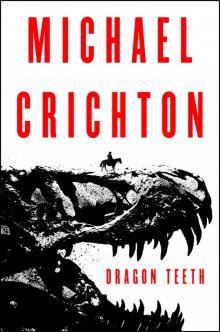 Dragon Teeth
Dragon Teeth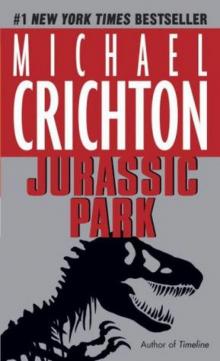 Jurassic Park
Jurassic Park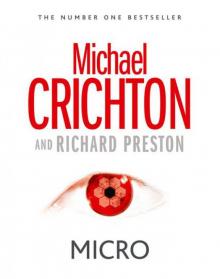 Micro
Micro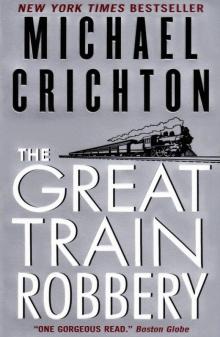 The Great Train Robbery
The Great Train Robbery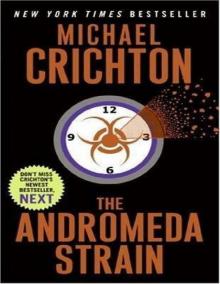 The Andromeda Strain
The Andromeda Strain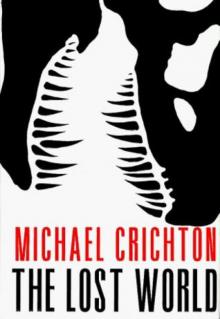 The Lost World
The Lost World Congo
Congo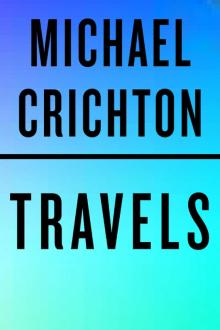 Travels
Travels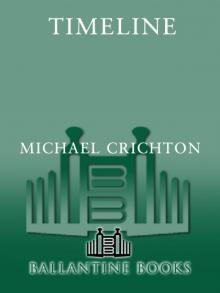 Timeline
Timeline Sphere
Sphere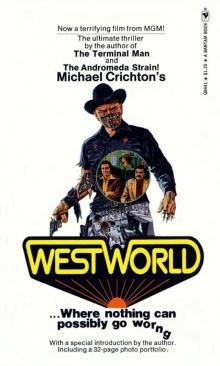 Westworld
Westworld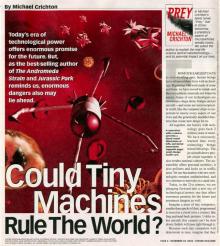 Prey
Prey State Of Fear
State Of Fear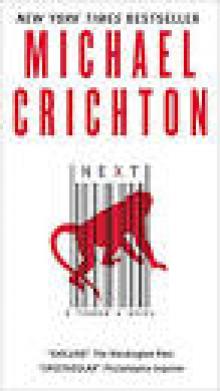 Next
Next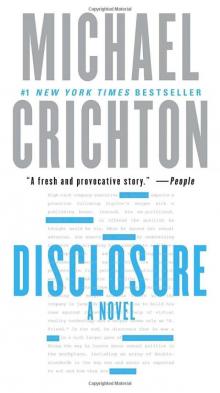 Disclosure
Disclosure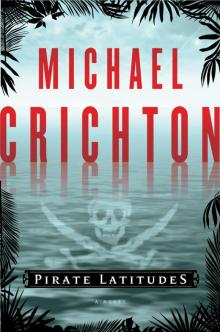 Pirate Latitudes
Pirate Latitudes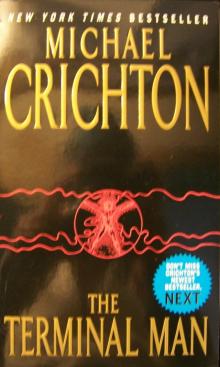 The Terminal Man
The Terminal Man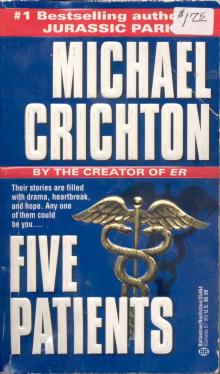 Five Patients
Five Patients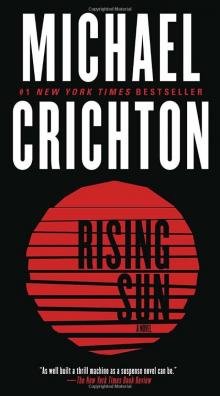 Rising Sun
Rising Sun Binary
Binary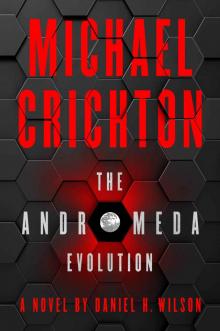 The Andromeda Evolution
The Andromeda Evolution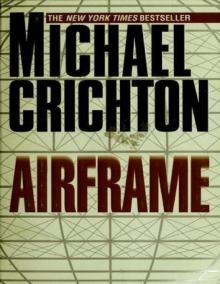 Airframe
Airframe Easy Go
Easy Go Drug of Choice
Drug of Choice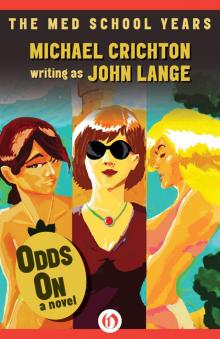 Odds On: A Novel
Odds On: A Novel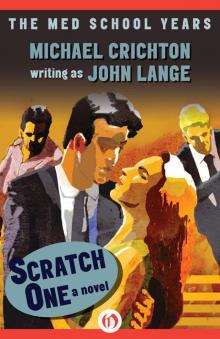 Scratch One
Scratch One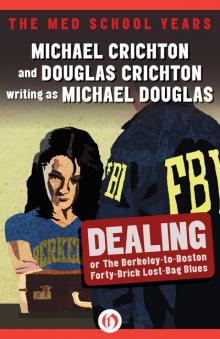 Dealing or The Berkeley-to-Boston Forty-Brick Lost-Bag Blues
Dealing or The Berkeley-to-Boston Forty-Brick Lost-Bag Blues Venom Business
Venom Business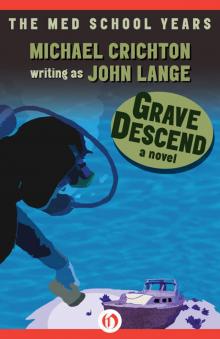 Grave Descend
Grave Descend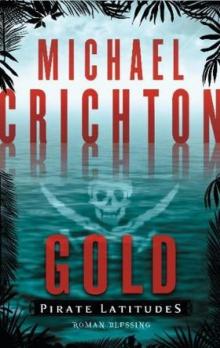 Gold - Pirate Latitudes
Gold - Pirate Latitudes Binary: A Novel
Binary: A Novel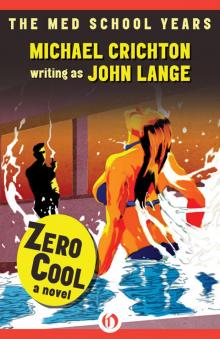 Zero Cool
Zero Cool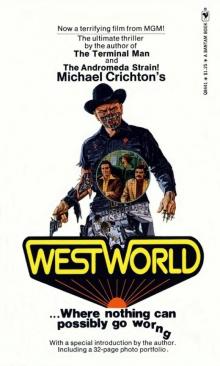 Delos 1 - Westworld
Delos 1 - Westworld